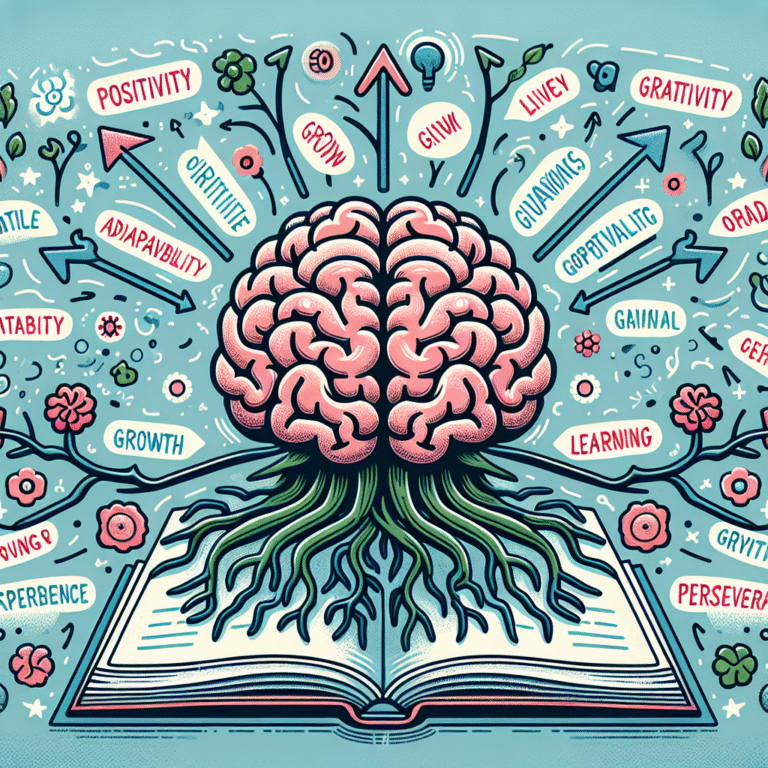
Introduction
In an age where educational outcomes are scrutinized and standards continuously rise, understanding what drives students to excel has never been more critical. This brings us to the invaluable concept of achievement motivation—the internal drive that propels individuals toward success. The Role of Achievement Motivation in Education: Inspiring the Next Generation serves not just as a theoretical framework; it is a beacon guiding educators, parents, and students alike towards meaningful educational experiences.
Imagine a classroom filled with eager learners, each motivated by an intrinsic desire to achieve their goals. Picture students undertaking challenges with resilience, seeing setbacks as opportunities for growth rather than obstacles. This inspiring vision is not merely aspirational but achievable through cultivating the right environment that fosters achievement motivation.
In this article, we dive deep into the significance of achievement motivation in education, explore case studies demonstrating its practical applications, and provide actionable insights to inspire both educators and students alike.
Understanding Achievement Motivation
What is Achievement Motivation?
Achievement motivation refers to an individual’s intrinsic drive to accomplish tasks and reach challenging standards. It signifies a desire to excel, compete, and surpass personal limits. Constructed through psychological theories, primarily those of David McClelland, it embodies elements of both internal and external factors that influence a student’s appetite for success.
Components of Achievement Motivation
- Intrinsic Motivation: This is the inner drive to pursue tasks for their own sake—the joy of learning and curiosity.
- Extrinsic Motivation: This involves external rewards, such as grades, praise, or scholarships, which can also spur individuals on to achieve their academic goals.
- Goal Orientation: Achievement motivation often aligns with personal goal setting—how students perceive success influences their approach to challenges.
Understanding these components is fundamental as we navigate The Role of Achievement Motivation in Education: Inspiring the Next Generation.
The Impact of Achievement Motivation on Student Success
Academic Performance Correlation
Research consistently establishes a strong link between achievement motivation and academic performance. High-achieving students tend to exhibit heightened levels of motivation, which empowers them to engage with challenging material and persevere through arduous tasks. A 2021 study conducted by the National Institute of Educational Statistics highlighted that students with high achievement motivation outperformed their peers by an average of 15 percentile points in mathematics and reading.
Case Study 1: The Growth Mindset Program
In a practical application, a public school in California implemented a Growth Mindset curriculum aimed at fostering achievement motivation among its seventh graders. Students engaged in activities designed to promote resilience, such as reflecting on failures and celebrating small victories. As a result, the average classroom performance increased by 20% over two academic quarters.
| Performance Metric | Before Implementation | After Implementation |
|---|---|---|
| Average Test Score | 75% | 90% |
| Student Engagement | Low | High |
Analysis of the Case Study
The Growth Mindset Program illustrates how targeted interventions can significantly enhance achievement motivation. By reframing challenges as opportunities for growth, educators cultivate a positive learning environment grounded in the principles of achievement motivation.
Key Strategies for Fostering Achievement Motivation
1. Setting Clear Goals
Establishing clear, attainable goals is essential for fostering achievement motivation. Students should understand not only what is expected of them but also how their goals align with broader educational objectives.
2. Encouraging a Growth Mindset
Teaching students to embrace a growth mindset can radically change their approach to challenges. Encouragement from educators to view setbacks as learning opportunities contributes tremendously to developing an achievement-oriented culture.
3. Providing Timely Feedback
Constructive feedback helps students gauge their progress and adjust their strategies. An effective feedback loop engages students in their learning and stimulates their achievement motivation.
4. Creating Supportive Learning Environments
Students thrive in environments that encourage collaboration and peer support. Building a community where learners assist one another nurtures both intrinsic and extrinsic motivation.
5. Celebrating Achievements
Recognizing achievements, large and small, reinforces the motivation to pursue further successes. Schools can organize award ceremonies, acknowledgments in newsletters, or social media shoutouts to celebrate student accomplishments.
The Role of Parents in Fostering Achievement Motivation
Understanding the Home Environment
Parents play a crucial role in shaping a child’s achievement motivation from an early age. By fostering resilience and encouraging their children to set ambitious goals, they can actively contribute to nurturing an intrinsic drive for success.
Case Study 2: The Importance of Parental Involvement
A longitudinal study conducted in New York revealed a striking correlation between parental involvement and student achievement motivation levels. Students whose parents were actively engaged in their education reported increased confidence, greater perseverance, and a more positive outlook toward learning.
| Parental Involvement Level | Student Achievement Motivation Score |
|---|---|
| High | 85% |
| Medium | 70% |
| Low | 55% |
Analysis of the Case Study
This study emphasizes the indispensable role of parents as motivators. Their active engagement can cultivate an atmosphere of achievement motivation, reinforcing the importance of the home as a foundational space for educational success.
The Teacher’s Influence on Achievement Motivation
The Critical Role of Educators
Teachers are more than just instructors; they are essential motivators of achievement. Their ability to inspire, challenge, and support students directly impacts their motivation levels.
Effective Teaching Strategies
- Build Relationships: Establishing trust and rapport with students creates a safe learning environment conducive to expressing ideas and taking academic risks.
- Incorporate Varied Teaching Styles: Utilizing diverse instructional methods caters to different learning styles, increasing student engagement and motivation.
- Encourage Student Leadership: Involving students in leading projects or activities fosters accountability and boosts their sense of achievement.
Technology and Achievement Motivation
Integrating EdTech Tools
Technology can be a significant ally in promoting achievement motivation. Educational technology platforms facilitate personalized learning experiences that cater to students’ unique abilities and goals. For instance, gamified learning applications transform traditional educational practices into interactive experiences, encouraging students to engage further with the material.
Case Study 3: Gamification in Mathematics
At a high school in Texas, educators introduced a gamified learning platform for mathematics. As students worked through levels, mastering various concepts in exchange for rewards, performance metrics reflected a 30% increase in overall mathematics scores.
| Metric | Before Gamification | After Gamification |
|---|---|---|
| Average Score | 70% | 90% |
| Student Engagement | 60% active | 90% active |
Analysis of the Case Study
This case study illustrates the transformative potential of technology in harnessing achievement motivation. By combining gamification with traditional educational frameworks, educators can invigorate students’ interests and drive toward academic accomplishments.
Incorporating Achievement Motivation in Curricula
Curriculum Design and Motivation
An engaging and responsive curriculum is pivotal in keeping students motivated. When students see the relevance of their studies to real-world applications, intrinsic motivation flourishes.
Project-Based Learning
Employing project-based learning allows students to apply theoretical knowledge to practical situations, directly aligning with the essence of achievement motivation. This experiential form of learning enhances critical thinking and instills a profound sense of accomplishment when students successfully complete projects.
Case Study 4: Project-Based Learning in Action
A high school in Illinois adopted project-based learning focused on environmental science. Students researched local ecological issues and developed presentations toward mitigating identified problems, leading to an increase in engagement and motivation as they saw their impact on the community.
| Metrics | Before Project-Based Learning | After Project-Based Learning |
|---|---|---|
| Engagement Level | 65% | 85% |
| Project Completion Rate | 70% | 95% |
Analysis of the Case Study
Project-based learning incorporates real-world relevance, enhancing students’ intrinsic motivation. Seeing the tangible effects of their work amplifies their drive to excel academically.
Challenges in Fostering Achievement Motivation
Overcoming Barriers
Despite the clear benefits of achievement motivation, various challenges persist. High-stakes testing pressures, a rigid curriculum, and socio-economic factors often hinder students’ motivations.
Strategies for Mitigation
- Flexible Learning Environments: Encouraging schools to adopt flexible structures that accommodate creative teaching methods can foster achievement motivation.
- Addressing Socio-Economic Disparities: Schools must work towards equitable resource distribution, ensuring that all students have access to opportunities that enhance their learning experiences.
Conclusion
The Role of Achievement Motivation in Education: Inspiring the Next Generation is not just a phrase; it encapsulates a complex yet vital element of educational success. By understanding the principles, strategies, and influences surrounding achievement motivation, we can cultivate a generation of resilient learners committed to their academic endeavors.
As educators and role models, our responsibilities include fostering environments where students are empowered to embrace challenges, view failure as a stepping stone to success, and celebrate every achievement, no matter how small.
Actionable Insights
- Engage in Goal Setting: Encourage daily or weekly goal-setting sessions with students to foster a focused mindset.
- Celebrate Small Wins: Develop systems for recognizing and celebrating minor achievements to build a culture of encouragement.
- Continuously Educate: Stay informed about the latest teaching strategies and tools that can enhance achievement motivation.
FAQs
1. What are some effective ways to build achievement motivation in students?
Creating a growth mindset, setting attainable goals, providing constructive feedback, and recognizing achievements are key.
2. How can parents support their child’s achievement motivation?
Active involvement in their education, encouraging curiosity, and celebrating accomplishments help to nurture intrinsic motivation.
3. What role does technology play in enhancing achievement motivation?
Technology offers personalized learning experiences, gamified elements, and engaging content that can significantly boost motivation.
4. Can achievement motivation be measured?
Yes, achievement motivation can be assessed through surveys, academic performance metrics, and self-assessment tools.
5. How does achievement motivation differ among students?
Various factors, including socio-economic background, parental involvement, and personal experiences, lead to different levels of motivation among students.
By adopting a proactive approach to harnessing achievement motivation, we can genuinely inspire the next generation to reach their fullest potential. The journey towards educational success is ongoing, but with the right tools and mindset, it can be extraordinary.















